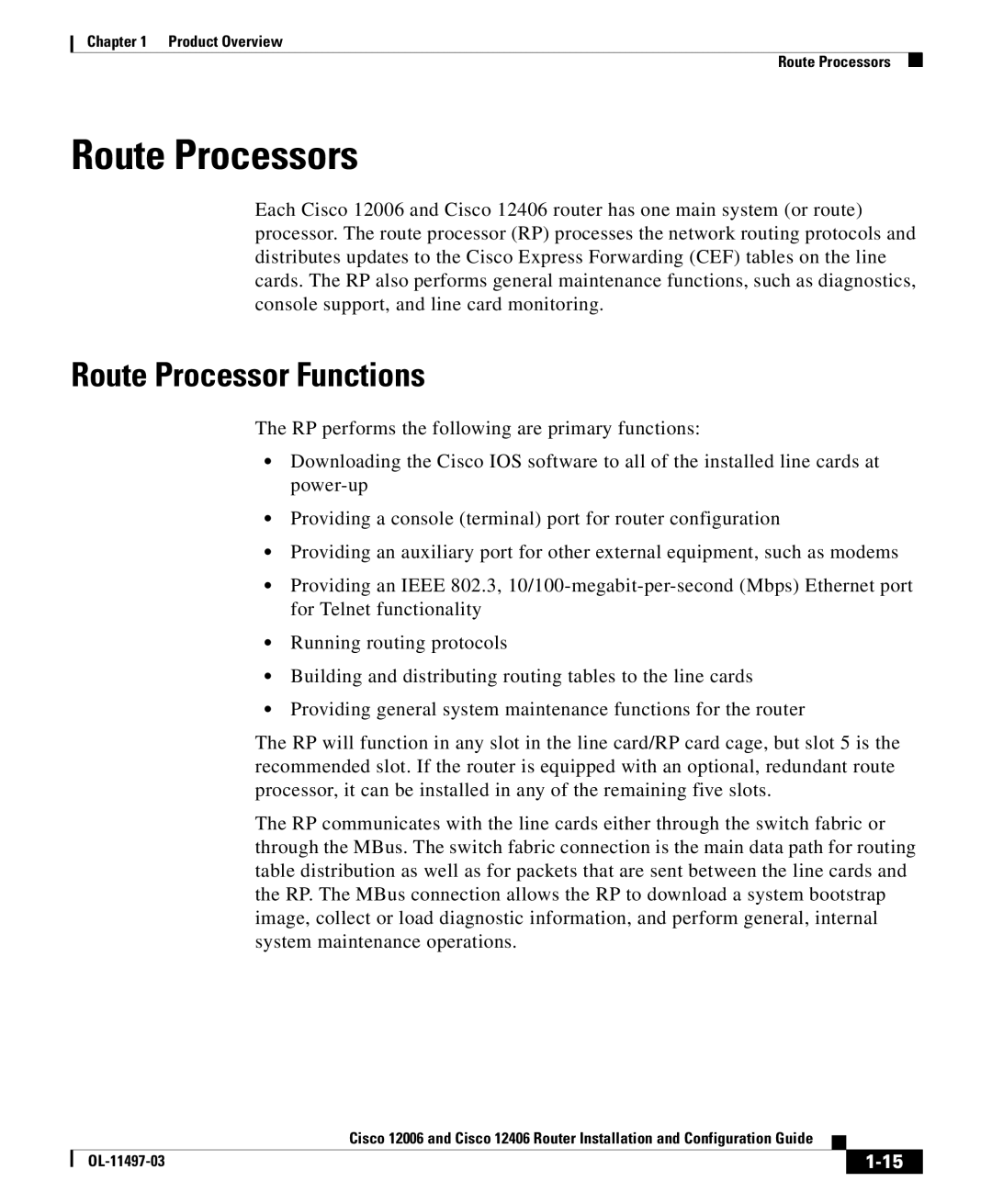Chapter 1 Product Overview
Route Processors
Route Processors
Each Cisco 12006 and Cisco 12406 router has one main system (or route) processor. The route processor (RP) processes the network routing protocols and distributes updates to the Cisco Express Forwarding (CEF) tables on the line cards. The RP also performs general maintenance functions, such as diagnostics, console support, and line card monitoring.
Route Processor Functions
The RP performs the following are primary functions:
•Downloading the Cisco IOS software to all of the installed line cards at
•Providing a console (terminal) port for router configuration
•Providing an auxiliary port for other external equipment, such as modems
•Providing an IEEE 802.3,
•Running routing protocols
•Building and distributing routing tables to the line cards
•Providing general system maintenance functions for the router
The RP will function in any slot in the line card/RP card cage, but slot 5 is the recommended slot. If the router is equipped with an optional, redundant route processor, it can be installed in any of the remaining five slots.
The RP communicates with the line cards either through the switch fabric or through the MBus. The switch fabric connection is the main data path for routing table distribution as well as for packets that are sent between the line cards and the RP. The MBus connection allows the RP to download a system bootstrap image, collect or load diagnostic information, and perform general, internal system maintenance operations.
|
| Cisco 12006 and Cisco 12406 Router Installation and Configuration Guide |
|
|
|
|
| ||
|
|
| ||
|
|
|
